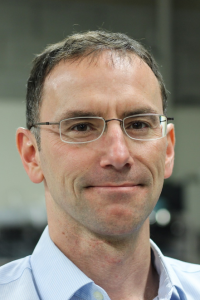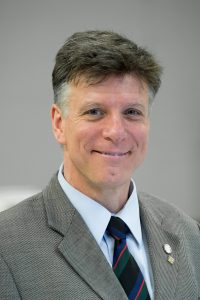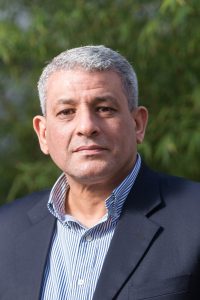
Research Interests
Concrete structures: seismic design, high-rise buildings, shear design, evaluation and repair of structures.

Research Interests
Environmental design, water management and reuse, sustainability in environmental engineering, contaminants of emerging concern, environmental modelling, water technology, emissions management, interactive learning

Research Interests
Materials science, concrete; FRPs, shotcrete, fiber composites, 3D printing, carbon-neutrality, rehabilitation, sensors, self-healing materials, biomimicry

Research Interests
Ultraviolet disinfection mechanisms, applications of UV LEDs (light emitting diodes), water disinfection, water reuse, decentralized systems, appropriate technology, applied environmental microbiology, molecular biology

Pierre Bérubé
Professor and Associate Head, Faculty Affairs and Development
Environmental Systems Engineering
Research Interests
Filtration/membrane processes for water/seawater treatment and resource recovery from wastewater; passive technologies for small/remote/decentralized systems; distribution system water quality assessment and modeling.

Alex Bigazzi
Associate Professor and Associate Head (Undergraduate Program)
Transportation Engineering
Research Interests
Active travel (walking and cycling), micromobility and human-electric hybrid vehicles (such as e-bikes), pedestrian and bicycle facility design, and motor vehicle emissions

Tamara Etmannski
Assistant Professor of Teaching, Co-Director ENVL program and Co-Director ENVE program
Engineering Education, Impacts in Engineering
Research Interests
Sustainability, engineering leadership, entrepreneurship, impact metrics, LCA, water management and treatment, water treatment technologies, curricula design and assessment, experiential teaching and learning in engineering

Research Interests
Micromechanics of internal erosion, triaxial-permeability testing, internal erosion of earth dams and their foundations, grain shape and the strength of sands, geosynthetics for soil stabilization, slope stability in engineering practice, debris flow travel distance

Research Interests
Probabilistic mechanics, structural reliability and optimization, timber engineering, earthquake engineering, decision making, risk, advanced structural analysis, finite elements, response sensitivity analysis, software development

Research Interests
Beams, plates and shells, finite element analysis, machine learning and optimization, efficient structural forms

Research Interests
Environmental Justice, Community-Based Participatory Action Research, Environmental Health and Engineering, Urban and Industrial water and soil contamination

Research Interests
Transportation systems analysis, multimodal networks, transportation infrastructure planning, adaptation, long-distance transportation, air transportation, resource allocation and optimization, multicriteria analysis and decision-making, supply-and-demand models

Research Interests
Field and 3D numerical modeling techniques to describe the spatial and temporal variations of physical processes and their impacts on transport in lakes and coastal waters.

Research Interests
Environmental fluid mechanics, hydraulics, hydrodynamic stability and mixing, physical limnology, water quality management.

Research Interests
Membranes, Nanoporous Media, Electrokinetics, Resource Recovery (energy, biochemicals, metals), Desalination, Water/Wastewater Treatment

Research Interests
Optimizing design and operational strategies of water resources projects; identifying reliable water quality management systems for natural and built environments in the face of uncertainty; adapting to climate change.

Loretta Li
Professor
Environmental Systems Engineering, Geo-Environmental Engineering, Geotechnical Engineering
Research Interests
Emerging contaminants; Microplastics; Contaminant fate and transport; Environmental assessment; Stormwater, Mine leachate, Water-soil/sediment treatment; Sustainable remediation technology; Landfill and leachate management; Sewage-sludge/biosolid management; Waste-to-resources processes; Water distribution pipe corrosion control.

Research Interests
Earthquake engineering, performance-based seismic design, seismic resilience, risk analysis, high-rise buildings, innovative structural systems.

Research Interests
sustainable management of coastal hazard risk through trans‐disciplinary, whole systems approaches and nature‐based solutions

Research Interests
Ground improvement methods, specially GI by Dynamic Compaction; application of high speed photography in geotechnical research; geotechnical physical modelling

Research Interests
Full Bayes safety models, Automated safety analysis using computer vision techniques, Safety evaluations, Traffic conflicts techniques, Pedestrian modeling, and ITS.

Research Interests
Environmental chemistry, trace contaminants, water reuse, nature-based treatment systems, stormwater treatment

Research Interests
Virtual Design and Construction (VDC), Building Information Modeling (BIM), collaboration and integrated project delivery, design and construction coordination, 4D (3D + time) visualization, interactive workspaces

Research Interests
Asset Management, Life Cycle Modeling, Optimization Methods, Real Options, Reinforcement Learning, Risk Analysis, Sequential Decision-Making, Stochastic Modeling, Sustainable Infrastructure Management, Time-Series Methods, Uncertainty Estimation and Propagation.

Research Interests
Theoretical and computational geomechanics, constitutive modeling of engineering materials, physics and mechanics of granular materials, geotechnical earthquake engineering, static and dynamic soil-structure interaction.

Research Interests
Finite element analysis; Mechanics of composite materials; Constitutive modeling of engineering materials, Plasticity, Damage mechanics; Process modeling of composite structures; Analysis of impact and blast loading of metallic and composite structures.

Research Interests
Earthquake engineering, structural dynamics, full scale vibration testing, shake table testing. Seismic risk evaluation and hazard management studies. Investigation of earthquake effects on man-made structures.

Research Interests
Water Resources Management, Mountain Hydrology, Catchment Hydrology, Flood Forecasting, Uncertainty, Information Theory, Control of Water Systems

Research Interests
Response of soils under earthquake loading with particular emphasis on liquefaction of silts; Advanced Soil Pipe Interaction Research (ASPIReTM) program with physical modeling to solve pipeline engineering problems; and advanced laboratory geomaterial characterization research to solve earthquake geotechnical engineering problems.

Research Interests
Classroom culture in engineering communication and the development of post-secondary curriculum with a special focus on facilitation, collaboration, and decolonization.
Reconciliation + Design Curriculum
Reconciliation + Design Dialogues

Research Interests
IR-NDT technologies, Turbulent Fluid Mechanics, Environmental Fluid Mechanics, Ecological Fluid Mechanics, Waste water treatment.

